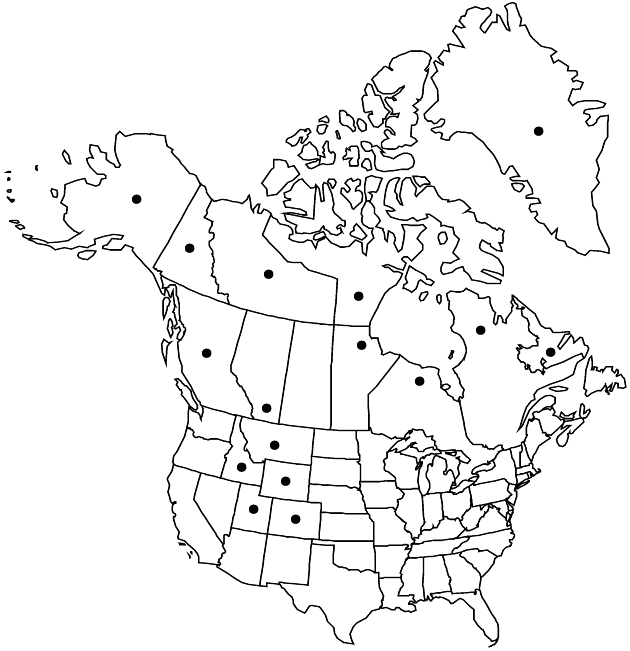Erigeron humilis
Edinburgh New Philos. J. 6: 175. 1828.
Perennials 2–15 (–25) cm; rhizomatous, fibrous-rooted, rhizomes or caudices simple or branched. Stems erect, villoso-hirsute (hair cross-walls dark to blackish purple), minutely glandular (conspicuously so proximal to heads). Leaves mostly basal (persistent) and cauline; blades spatulate to spatulate-oblanceolate, 10–50 (–80) × 2–7 (–11) mm, cauline abruptly reduced distally, margins entire, faces sparsely to moderately villous (hair cross-walls dark reddish or purple), sometimes sparsely minutely glandular. Heads 1. Involucres 6–9 × 10–15 (–20) mm. Phyllaries in (1–) 2 (–3) series (usually dark purple), strigoso-hirsute (hair cross-walls dark reddish to blackish purple), minutely glandular. Ray-florets 50–100 (–150); corollas bluish purple to lavender, rarely whitish, 4–6 mm, laminae erect (filiform, 0.3–1 mm wide), not coiling or reflexing. Disc corollas 2.4–3 mm. Cypselae 2.2–2.5 mm, plump, 2-nerved, faces finely strigoso-hirsute; pappi: outer of setae (inconspicuous), inner of 20–30 bristles. 2n = 36.
Phenology: Flowering Jun–Aug(–Sep).
Habitat: Arctic and alpine tundra, snowbed slopes, pond and stream margins, boulder ridges in streambeds, heaths, ledges, dry gravelly slopes
Elevation: (Greenland, 0–)1000–2400(–4000, Colorado, Utah) m
Distribution

Greenland, Alta., B.C., Man., Nfld. and Labr. (Labr.), N.W.T., Nunavut, Ont., Que., Yukon, Alaska, Colo., Idaho, Mont., Utah, Wyo., n Eurasia
Discussion
Selected References
None.